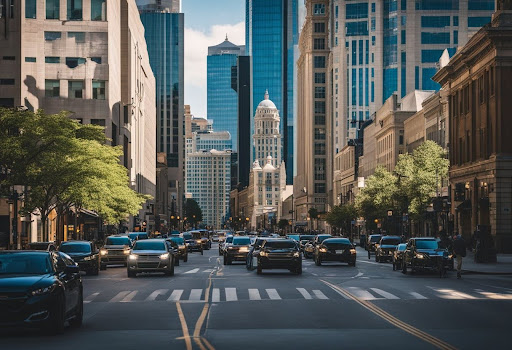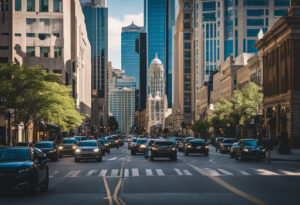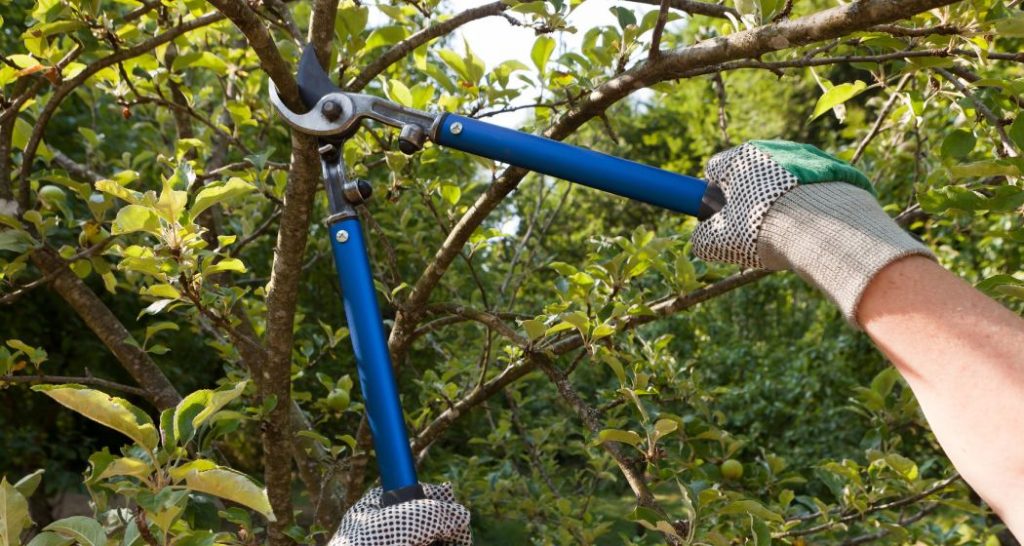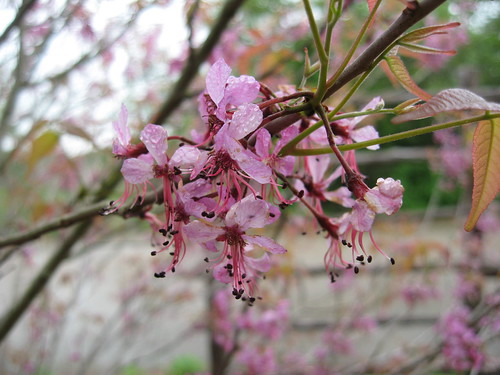
Date December 22, 2023
Fort Worth, Texas has a rich history of urban forestry, with a diverse range of tree species that have been carefully cultivated over the years. The city’s urban tree canopy is a critical component of its environmental and social fabric, providing a host of benefits to residents and visitors alike. However, like many cities across the country, Fort Worth faces a range of challenges in maintaining and growing its urban forest.
One of the key challenges facing Fort Worth’s urban tree canopy is the impact of urbanization and development. As the city continues to grow and expand, more and more land is being developed for commercial and residential use, which can lead to the removal of trees and other vegetation. This loss of green space can have significant environmental and social impacts, including increased air pollution, reduced biodiversity, and decreased quality of life for residents. To address these challenges, the city has implemented a range of policies and programs aimed at protecting and expanding its urban forest. TreeNewal is at the forefront of helping Fort Worth mitigate the challenges facing the urban tree canopy.
Evolution of Fort Worth’s Urban Tree Canopy
Historical Overview
Fort Worth’s urban tree canopy has a rich history dating back to the city’s founding in 1849. The city’s first settlers recognized the importance of trees in providing shade, shelter, and beauty. As the city grew, so did its tree canopy, with early residents planting a variety of species to create a diverse urban forest.
In the early 20th century, Fort Worth’s tree canopy faced significant challenges, including drought, disease, and urbanization. However, the city’s leaders recognized the importance of trees to the city’s health and well-being and implemented policies to protect and expand the urban forest.
Recent Growth Trends
In recent years, Fort Worth’s urban tree canopy has experienced significant growth, thanks in part to the city’s commitment to sustainability and environmental stewardship. The city has implemented a number of programs and initiatives aimed at preserving and expanding the urban forest, including:
- The Fort Worth Tree Initiative, which aims to plant 10,000 new trees in the city by 2025.
- The Tree Canopy Analysis, which provides detailed information on the city’s tree canopy cover and helps guide tree planting and management efforts.
- The Tree Preservation Ordinance, which regulates the removal and pruning of trees in the city to protect the urban forest.
Despite these efforts, Fort Worth’s urban tree canopy still faces a number of challenges, including climate change, invasive species, and urbanization. However, with continued investment and commitment, the city’s urban forest is poised to continue to thrive and provide numerous benefits to residents and visitors alike.
Benefits and Significance of Urban Tree Canopy
Urban tree canopy is an essential component of any city, and Fort Worth is no exception. The city has been working to increase its urban tree canopy coverage for many years, and the benefits of this effort are significant. In this section, we will explore the environmental and social benefits of Fort Worth’s urban tree canopy.
Environmental Impact
The environmental impact of urban tree canopy is undeniable. Trees absorb carbon dioxide and other pollutants, making the air cleaner and healthier for everyone. They also help to regulate temperature, reducing the urban heat island effect and mitigating the effects of climate change. In addition, trees provide habitat for wildlife and help to preserve biodiversity in urban areas.
Social and Health Benefits
The social and health benefits of urban tree canopy are equally important. Trees provide shade and coolness, making outdoor activities more enjoyable and reducing the risk of heat-related illnesses. They also provide a sense of place and community, creating a more attractive and livable city. Research has shown that exposure to nature and green spaces can have a positive impact on mental health and well-being, reducing stress and promoting relaxation.
Overall, the benefits of urban tree canopy in Fort Worth are clear. By continuing to invest in this important resource, the city can improve the quality of life for its residents and create a more sustainable and resilient community.
Challenges in Urban Tree Canopy Management
Pest and Disease Control
One of the most significant challenges in managing the urban tree canopy in Fort Worth is controlling pests and diseases. The city’s warm and humid climate provides the perfect breeding ground for insects and microorganisms that can damage trees. Some of the most common pests and diseases that affect Fort Worth’s trees include oak wilt, emerald ash borer, and webworms.
To combat these threats, the city has implemented a comprehensive pest and disease management program. This program includes regular tree inspections, early detection and rapid response protocols, and the use of environmentally friendly pesticides.
Urban Development Pressures
As Fort Worth continues to grow and expand, urban development pressures are putting a strain on the city’s urban tree canopy. Developers often view trees as obstacles to construction and may remove them to make way for new buildings or infrastructure.
To address this issue, the city has implemented tree preservation ordinances that require developers to protect and maintain existing trees during construction. Additionally, the city has established a tree mitigation program that requires developers to plant new trees to replace those that are removed.
Climate Change Effects
Climate change is also posing a significant challenge to the urban tree canopy in Fort Worth. Rising temperatures and changing precipitation patterns can stress trees and make them more susceptible to pests and diseases. Additionally, extreme weather events such as droughts and floods can damage or kill trees.
To mitigate the effects of climate change on the urban tree canopy, the city has implemented a tree planting program that focuses on planting species that are more resilient to changing climate conditions. The city also provides education and outreach programs to help residents understand the importance of trees in reducing the effects of climate change.
Strategies for Sustainable Canopy Growth
Policy and Planning Initiatives
The city of Fort Worth has implemented several policy and planning initiatives to promote sustainable canopy growth. One such initiative is the Urban Forestry Management Plan, which outlines strategies for increasing and maintaining the city’s tree canopy. The plan includes goals for increasing the number of trees planted annually and improving the health of existing trees through proper maintenance and care.
Another policy initiative is the Tree Preservation Ordinance, which regulates the removal and replacement of trees on public and private property. The ordinance requires developers to replace any trees removed during construction and provides incentives for property owners to preserve and maintain existing trees.
Community Engagement and Education
Community engagement and education play a vital role in promoting sustainable canopy growth. The city of Fort Worth has several programs aimed at educating residents on the importance of trees and encouraging community involvement in tree planting and care.
One such program is the Neighborhood Tree Planting Program, which provides free trees to residents for planting on their property. The program also includes educational resources on proper tree care and maintenance.
The city also hosts several events throughout the year, such as Arbor Day celebrations and tree planting events, to raise awareness about the benefits of trees and encourage community involvement in tree planting and care.
Innovative Arboriculture Practices
In addition to policy initiatives and community engagement, innovative arboriculture practices can also promote sustainable canopy growth. The city of Fort Worth has implemented several innovative practices, such as tree injection treatments for pest and disease control and aerial tree inspections using drones.
The city also utilizes advanced tree planting techniques, such as structural soil systems, to promote tree root growth and improve soil conditions for tree growth.
By implementing these strategies for sustainable canopy growth, the city of Fort Worth can continue to promote a healthy and vibrant urban tree canopy for years to come.
In Fort Worth, Texas, the urban tree canopy is not just a beautiful part of the city’s landscape, but a crucial element of its environmental and social fabric. Facing challenges like urbanization, pest and disease control, and the effects of climate change, it’s more important than ever to focus on sustainable growth and management of this vital resource. TreeNewal, with its extensive experience since 2017, stands as a key player in this effort. Their expertise in Urban Tree Canopy Fort Worth management is instrumental in preserving and enhancing the city’s greenery. By adopting forward-thinking strategies, from policy initiatives to innovative arboriculture practices, and prioritizing community engagement and education, TreeNewal is helping to ensure that Fort Worth’s urban forest continues to thrive. This provides numerous benefits to the city, from environmental improvements to enhanced quality of life for its residents. Reach out to TreeNewal for their expert support in nurturing Fort Worth’s urban tree canopy, safeguarding this essential natural asset for future generations.









